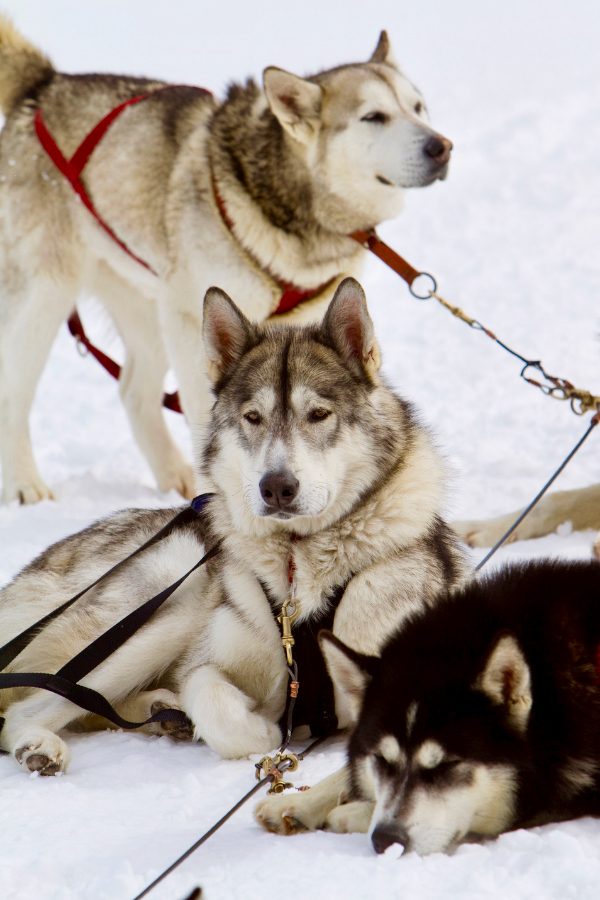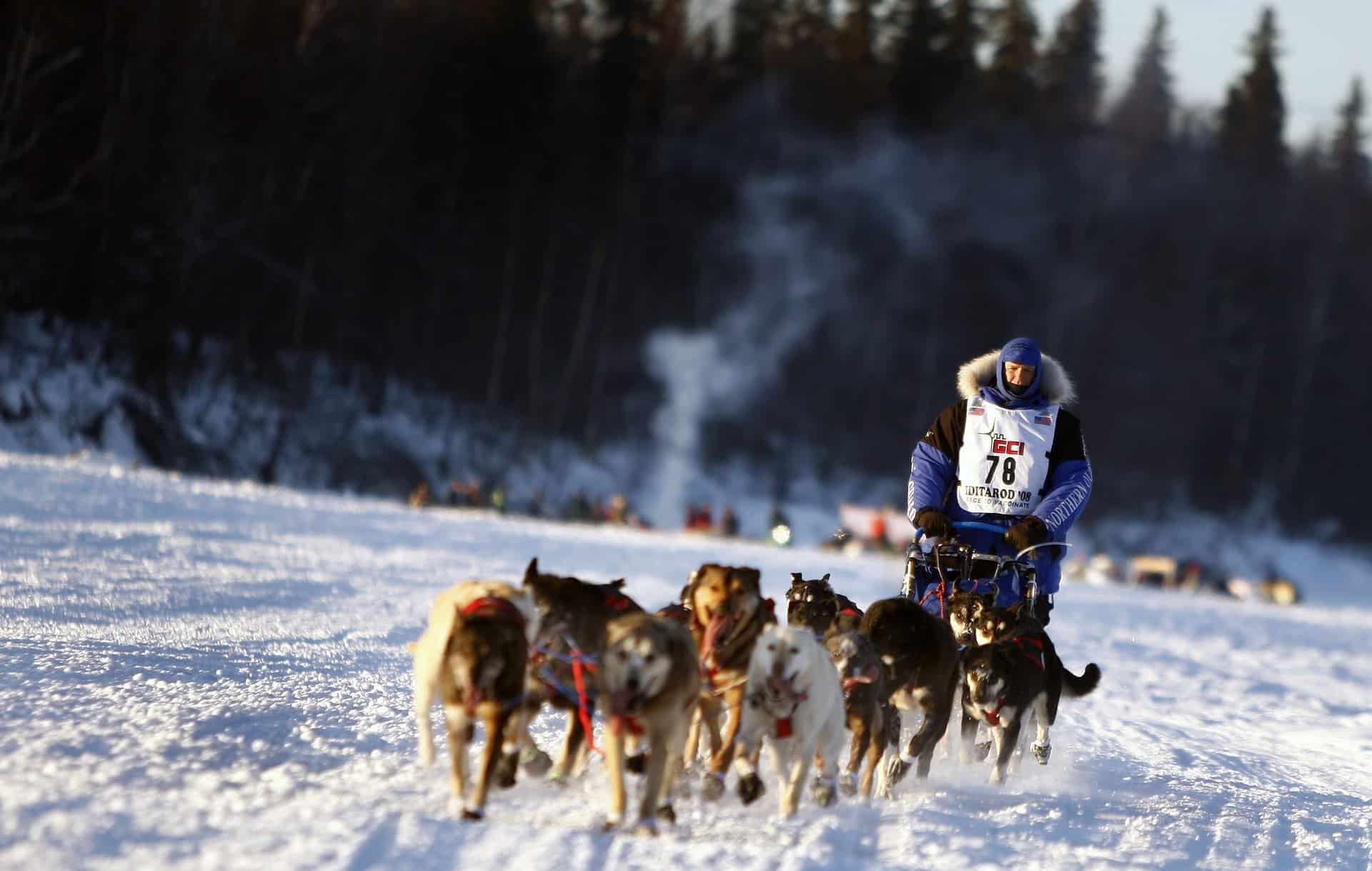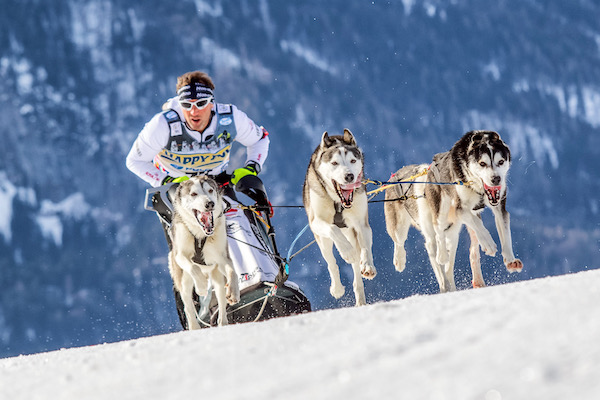ALASKA
The Greatest Race on Earth
By Charlotte McGlone
Chapel Hill, NC, United States
An epic race spanning 1,000 miles of the world’s toughest terrain. Just you and your dogs crossing rugged mountains, isolated prairies, frozen rivers, and dense forests.
The Iditarod
Every year 63 teams, on average, compete in the journey from Anchorage to Nome, Alaska. The rules state that each team must start with a minimum of 12 and a maximum of 16 dogs, plus a musher (the human in charge). It takes about 10 days to finish.
The fastest time was recorded in 2021, when Dallas Seavey crossed the finish line in 7 days, 14 hours, 8 minutes, and 57 seconds. However, the race was 140 miles shorter that year to reduce the risk of spreading COVID-19.
The Iditarod is unlike many other races because it gives a special prize to the last team to finish. The Red Lantern Award honors persistence and dedication. The record for the slowest time ever is 32 days, 15 hours, and 9 minutes. Can you imagine taking over a month to cross a finish line?
Origins
The Iditarod has a history that is essential to the culture of the northernmost state in the US. In the early 1900s, when thousands rushed to Alaska in search of gold, they traveled and received supplies along the Iditarod Trail, which was only accessible by dog sled given its freezing and snowy conditions. Even before the gold rush, mushing was a central part of life in the North. Still today, as modern transportation becomes more common, it remains the fallback.
One Heroic Dog
The most famous story of dog sled heroism illustrates its importance. Immortalized by the movie Balto, mushers and their dogs rescued the town of Nome in 1925 when it was threatened by an outbreak of disease. The crucial medicine was delivered only because of the mushers’ determination and their dogs’ faithful service.
Recognizing this heroic feat, Wasilla resident Dorothy G. Page wanted to find a way to preserve mushing’s place in history. She was the driving force behind the modern Iditarod race, named after the famous trail, which was first run in its entirety in 1973.

Canine Athletes
Of course, the essential part of the race is the dogs. Working in tandem with each other and their human captain, these animals can achieve incredible feats. They can run for hours at speeds of 20 miles per hour and are incredibly strong. To give you an example of their power, one dog dragged over half a ton in the canine version of a tractor pull.
The setup of the team is very important. Mushers carefully select dogs for the following roles:
- lead dog — in charge of responding to the musher’s commands, setting the pace, and choosing a path
- point dogs — the second in command
- swing dogs — several of these to help pull
- wheel dogs — closest to the sled, often the sturdiest and strongest
Mushers also consider racing breeds such as:
- Alaskan huskies — the most popular breed, weighing 40 to 60 pounds, lean yet strong
- Alaskan malamute — weighing 75 to 85 pounds, usually chosen as lead dogs, wheel dogs, or for pulling especially heavy freight
- Samoyeds
- Greenland dogs
Pit Stops
The mushers pay special attention to the needs of their dogs, and at the 27 checkpoints located along the trail, they are given the opportunity to rest their dogs or get veterinary attention. The teams that race in the Iditarod are great examples of humans and animals working together to achieve amazing things.
Have a suggestion for this story? We’d love for you to submit it!


Blank
Blank
Math Resources
Learning Activity:
- Connecting to the Standards: The Number System (Grade 6)
- Connecting to the Standards: Ratios and Proportional Relationships (Grade 7)
- Connecting to the Standards: Geometry (Grade 8)
Sample Problems:
- How many years has it been since the first Iditarod?
- If a sled dog needs to eat about 10,000 calories a day and a pound of meat contains about 750 calories, how much does an average dog need to eat every day? How much meat must a sled carry for a team of dogs to make it from one checkpoint to the next?
- If the sled dogs travel 150 miles each day, how many days would it take them to finish the race? How many hours?
- The average number of dogs in a team is 14. If 56 teams entered the race, how many total dogs would that be?
Extension Question
Animal rights groups have criticized the Iditarod for pushing dogs too hard under harsh conditions. What do you think about dogs being used in this grueling race? Does it seem unfair to treat them this way? Why?
Explore Further
- Official website of the Iditarod
- Educational resources at Iditarod EDU
- Video “Inside the Iditarod”
- Video of the first stop on the trail
- Local newspaper coverage of the race
- More information on animal rights issues
- Profile of Dorothy Page
Share Your Story
Write your own Global Math Story and send it to us!
Sorry, the comment form is closed at this time.